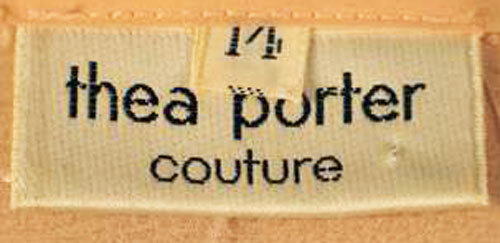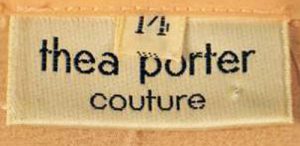Thea Porter (1927-2000) was born in Jerusalem to an Irish Presbyterian missionary and his French wife and was raised in Damascus, Syria. She moved to Beirut as a British Embassy wife, but split from her husband and finally settled in London in 1966, at the age of 40. She opened her own textile and fashion boutique — Thea Porter Decorations — on Greek Street in Soho the following year. The shop sold Eastern textiles imported from Persia, Syria, and India, mainly focusing on bedspreads, pillows, and caftans. The caftans began to sell so quickly that her imports couldn’t keep up with the demand, so she began designing and producing them herself. Her clothing range was largely inspired by antique caftans, as well as fashion from the Victorian and Renaissance eras, and is easily identifiable by intricately decorated, hand painted, and layered fabric.
She admits her fashions were created in that particular style as she had “…always felt very envious of Arab women because they can hide behind their clothes, it is a very protected and secure way to feel.” Admitting that some of her creations were far removed from anything an Arab woman would wear she said that she felt “It’s important that the end result should never be a costume… they are my own romantic fantasies.” Not approving of how far other designer’s fantasies went, she remarked to one interviewer that the interest in Arab-inspired fashion “has led to some awful parodies – exaggerated ideas of what harem dresses are.”
Her clothing attracted many celebrity customers who enjoyed wearing her erotic, yet comfortable, creations whose secret was to conceal rather than reveal. Widely popular in the late 1960s, one critic even commented in 1969 that “The audience at the London premiere of the hippy musical Hair seemed to be completely dressed by Thea Porter.”
Written by premierludwig

